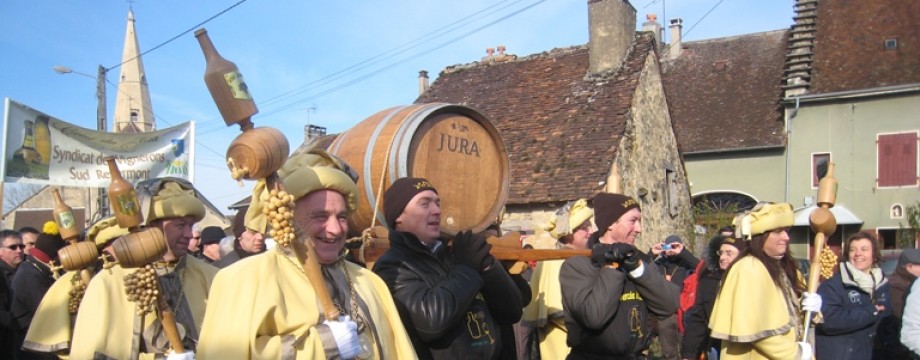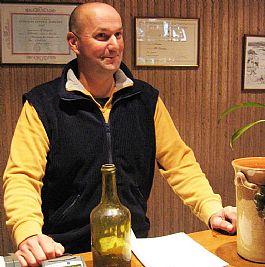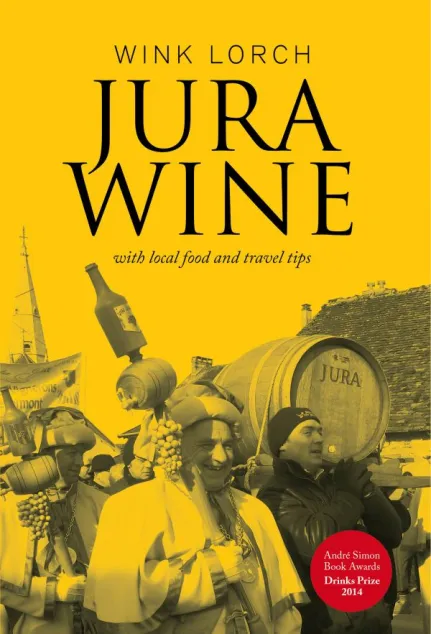Among Jura wine aficionados, Stéphane Tissot needs no introduction: his wines can be found all over New York City, San Francisco, and considering that we are talking about the tiny Jura wine region, they are fairly widely available elsewhere in the USA, in Canada, Australia and even these days on a few lists in London.
Running Jura’s largest biodynamic wine estate and exporting 40% of his production – a high proportion for Jura – Stéphane still needs to nurture his French clients buying the 60% and he is proud to do so.
Recently Stéphane’s fame will have broadened in France with his appearance in a beautifully produced edition of the France 3 TV documentary programme Des Racines et des Ailes (literally translated as ‘Roots and Wings’), which explored many aspects of Jura life. The programme opens in Arbois with the TV crew joining Stéphane and his team for the harvest of grapes destined for drying to make Vin de Paille. It shows how the grapes are painstakingly laid on straw in wooden cartons, which are then stacked up in an attic; the film then moves on to follow Stéphane’s role in the wonderful Biou festival in Arbois.
The multi-faceted attractions of the Jura
The 1 hour 45 minute programme is really well worth watching for anyone who understands a little French, as the filming gives a real taste of what makes the French Jura region so interesting. There are various stories including a look at forestry and the making of shingle roof tiles; how a beautiful Palladian villa built in the middle of Jura’s woodland is being painstakingly restored as a luxury B&B; a traditional transhumance procession down the mountain (called the désalpe); extreme diving in one of Jura’s large lakes; a wild animal and bird rescue centre and hospital; the rescue of an old steam train, and husky driving in the mountains.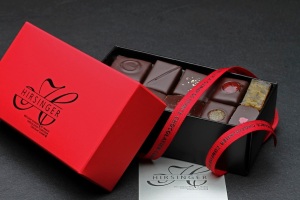
Local culinary delights feature too. Stéphane reappears with the crew to meet one of his local friends, the wonderful Arbois chocolatier, Edouard Hirsinger. The film explores the way he makes some of his chocolates using locally grown absinthe among many other flavours, and shows the fascinating museum Edouard has created with his father. Together with a group of others, they partake in the traditional and painstaking way of making marrons glacés, ready for Christmas. And Stéphane has friends in high places too, specifically at a Comté cheese ageing specialist, who ages thousands of cheeses at Fort Les Rousses, high in the mountains. A fascinating discussion ensues, with a 3-year-old cheese being likened to a 50-year-old wine.
Where innovation and tradition meet
I loved watching Stéphane’s pride and enthusiasm in visiting and learning from other Jura artisans. Stéphane is a joiner and participator in his region, even if in his winemaking he pushes the boundaries and limits of what is deemed traditional (something that doesn’t always win him local friends), his heart and determination is always in the right place.
In March this year I spent a couple of hours with Stéphane together with Sophie Barrett of New York City’s Chambers Street Wines. As always with Stéphane, we had a rapid but illuminating tasting learning new things all the time. Stéphane produces 35 wines, a huge range for a modest estate and here is one Jura producer where I can’t select a particular style at which he excels as there is simply too much that is good in so many styles. Here I will just touch on the beginning and end of our mini-marathon tasting.
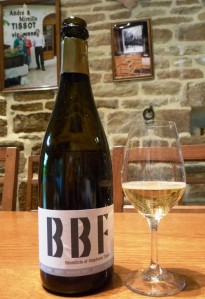 In his sparkling Crémant du Jura range, I love his BBF – a Blanc de Blancs from 100% Chardonnay aged for nine months in fût (Burgundian 228-litre barrels). He also served us 2010 Indigène where he uses indigenous yeast even for the 2nd fermentation in bottle. He bottles the base wine blend (50% Chardonnay, 40% Pinot Noir and 5% each of Trousseau and Poulsard) with a few centilitres of Vin de Paille that is undergoing fermentation. The Vin de Paille grapes are pressed early in the year and the juice or must takes several months to ferment; bottling of the Crémant takes place in around April so the timing is perfect. The final wine is Extra Brut and is very fine, full of fruit with a creamy character.
In his sparkling Crémant du Jura range, I love his BBF – a Blanc de Blancs from 100% Chardonnay aged for nine months in fût (Burgundian 228-litre barrels). He also served us 2010 Indigène where he uses indigenous yeast even for the 2nd fermentation in bottle. He bottles the base wine blend (50% Chardonnay, 40% Pinot Noir and 5% each of Trousseau and Poulsard) with a few centilitres of Vin de Paille that is undergoing fermentation. The Vin de Paille grapes are pressed early in the year and the juice or must takes several months to ferment; bottling of the Crémant takes place in around April so the timing is perfect. The final wine is Extra Brut and is very fine, full of fruit with a creamy character.
For many years, Stéphane has made two or more sweet wines, made as Vin de Paille, but not allowed to be labelled as such. Instead they are moût de raisin partiellement fermenté issu de raisin passerillés, which translates as ‘partially fermented grape juice from dried grapes’. Spirale is the name of the main cuvée and the 2007 we tasted was from 60% Savagnin with 20% Poulsard and 20% Chardonnay (each vintage varies in composition), and it had a residual sugar of 300grams per litre but only 8% alcohol. It is beautifully balanced and on the basis of previous vintages I’ve tasted will age supremely well. Jura wine law requires a minimum alcohol of 14% hence why the wine is not able to be labelled Vin de Paille. A second sweet wine we tasted was PMG 2007 with a whopping 450g/litre of sugar and around 6% alcohol – it will take a few years for the luscious sweetness to calm down.
Collaboration between local artisans
The Des Racines et des Ailes programme continues with the pressing of Stéphane’s Vin de Paille, when his father André (the estate is still named Domaine André et Mireille Tissot) joins him. I’ve always been impressed how André encouraged and supported his son Stéphane and his wife Bénédicte in following their ideas for the estate that André with his wife Mireille had painstakingly built up over the years.
The end of the documentary sees the chocolatier Edouard Hirsinger learning to drive a husky team in the mountains and being taken to see a herd of bison – another chance to get in touch with the nature of the Jura region that both he and Stéphane value so much.
Amazingly, the whole of this edition of Des Racines et Des Ailes is currently available on YouTube, I presume legally – so here it is. Great practice for your French if you are not a native speaker, and if you do not understand the language, you will still enjoy the images.
Wishing you a Happy New Year and a Jura-filled 2013, certainly I expect my year to be Jura-focussed and hope that this time next year I will have something to show for it.
